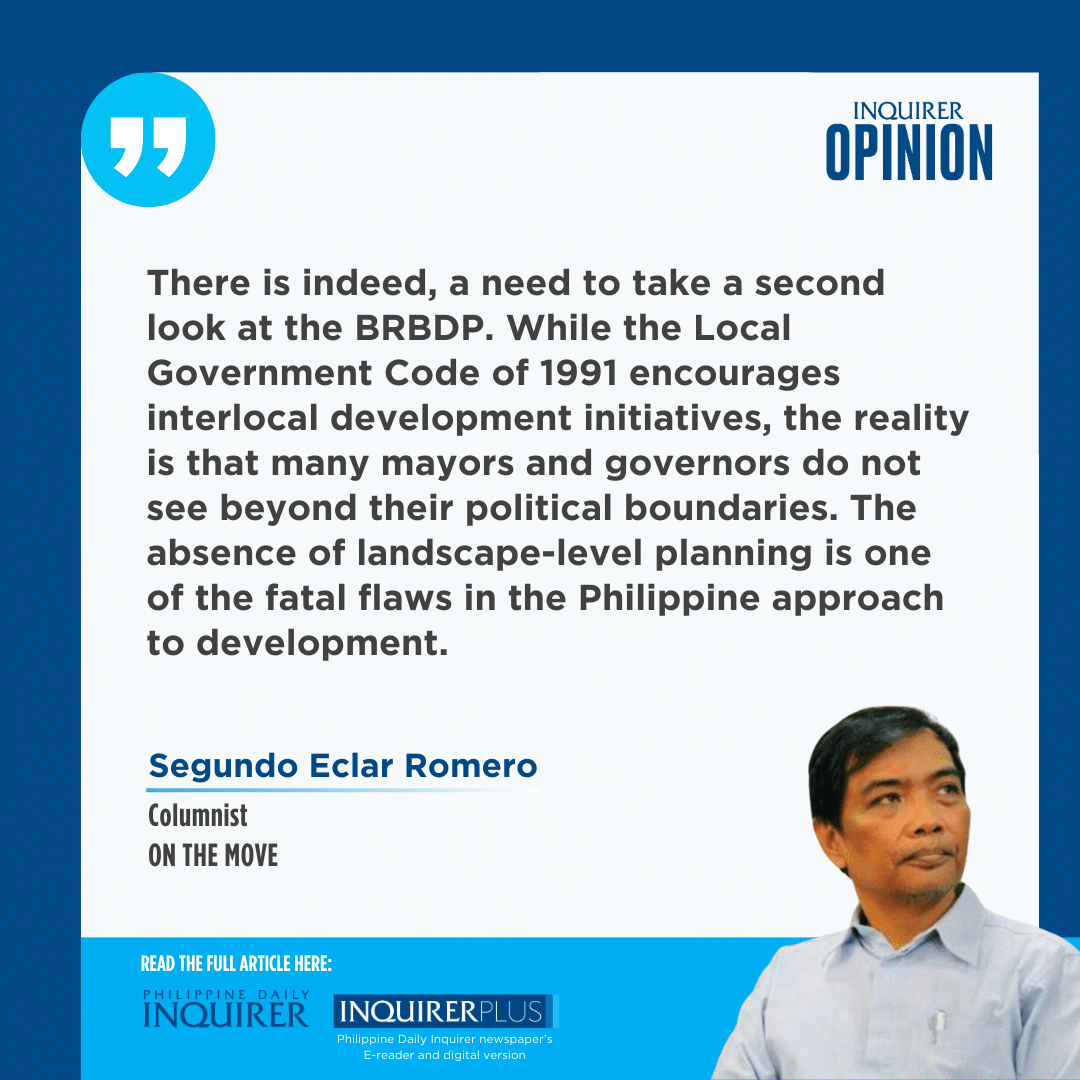Learning from the Bicol River basin experience
Following the devastation brought by Severe Tropical Storm “Kristine” in the Bicol Region, President Marcos on Saturday said he plans to revisit the Bicol River Basin Development Program (BRBDP), a project of his late father Ferdinand Marcos Sr. in 1973.
“I have here a study from someone from UP (University of the Philippines) that assessed the effects of the BRBDP. Despite some challenges, mukha namang malaki ang naitulong. ’Yun lamang hindi natapos. Noong 1986 when the government changed, nawala na ’yung project, natigil,” he said.
Article continues after this advertisementMr. Marcos was referring to a study of Jeanne Illo on “Lessons from the Bicol River Basin Development Program and other Programs.” Illo’s study was part of broader studies on area-based convergence programs. It distilled key lessons for regional development and interlocal cooperation. As a key program of the Marcos Sr. martial law regime, the BRBDP launched in 1973 was a pivotal experiment in geography-based planning focused on hydrological areas rather than political boundaries.
“A river basin consists of the entire geographic area (hillside, valley, plain) from which water flows into the primary river, which is made up of an intricate network of smaller rivers and streams. Rain falling within a river basin, or watershed, runs downhill until it reaches a stream. Small streams join other streams and flow into a river, and eventually that river flows into the sea.” River basins, if used as a framework for regional planning, could maximize the benefits and reduce the threats from the Philippine natural environment.
When the BRBDP failed despite partial initial success as documented by Illo, the river basin development model was prematurely abandoned, washing away the hopes for the Philippines’ 18 major river basins, covering a total area of 110,000 square kilometers or 36 percent of the total land area, as a focus of development.
Article continues after this advertisementMetro Manila stands to benefit from river basin-oriented development thinking. It is located within the Pasig-Marikina-Laguna de Bay Basin, which consists of the Laguna de Bay [Lake] watershed, the lake proper, and the Pasig and Marikina River sub-basins.
Only under the open-ended Marcos leadership could such a long-term, broad-scope, interlocal program could be attempted. Bicol was also a natural focus because it was a region with high poverty incidence and political unrest. The BRBDP was a significant endorsement by international donors, including the United States Agency for International Development and Asian Development Bank, for the centralized governance Marcos established.
But this is only half of the story in this column. The other is about that amazing, iconic lady, Leni Robredo, who was recently portrayed in media, waist-deep in the floods spawned by Kristine, helping the victims.
We all know from the slew of information from the 2022 presidential campaign about how she worked as a researcher for the Bicol River Basin Development Program in 1986 to save money for her law education. Meantime, in the post-martial law euphoria, Jesse Robredo, heeding the call of then President Corazon Aquino to public service, left his executive position at San Miguel Corp. to be the program director of the BRBDP in Naga.
And so they met. Director Jesse interviewed Leni who came applying for a job. Leni has let on that from the start, she knew that Jesse was “the one.” Despite the objection of Leni’s father, Jesse persisted. Within the year, they were married.
The BRBDP was the launching pad of Jesse’s stellar political career, shaping and displaying his transformative approach to governance and development.
There is indeed, a need to take a second look at the BRBDP. While the Local Government Code of 1991 encourages interlocal development initiatives, the reality is that many mayors and governors do not see beyond their political boundaries. The absence of landscape-level planning is one of the fatal flaws in the Philippine approach to development.
Going forward, we need to take seriously Illo’s lessons from the BRBDP: coordination, technical quality, and local engagement are crucial for long-term success. Jesse Robredo’s interlocal development initiatives like the Metro Naga Development Council enabled Metro-wide planning, service equalization, and shared resources, emergency services, and livelihood programs. However, to enable long-term, inclusive, and sustainable development planning, we need the emergence of programmatic political parties and leaders that have eluded us for so long.
—————-
















